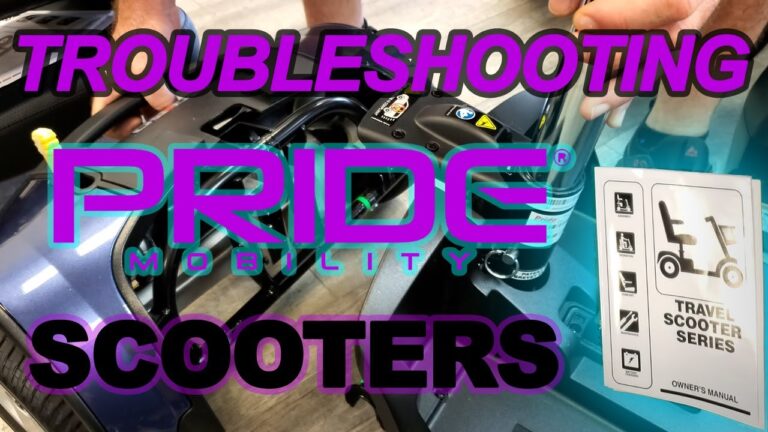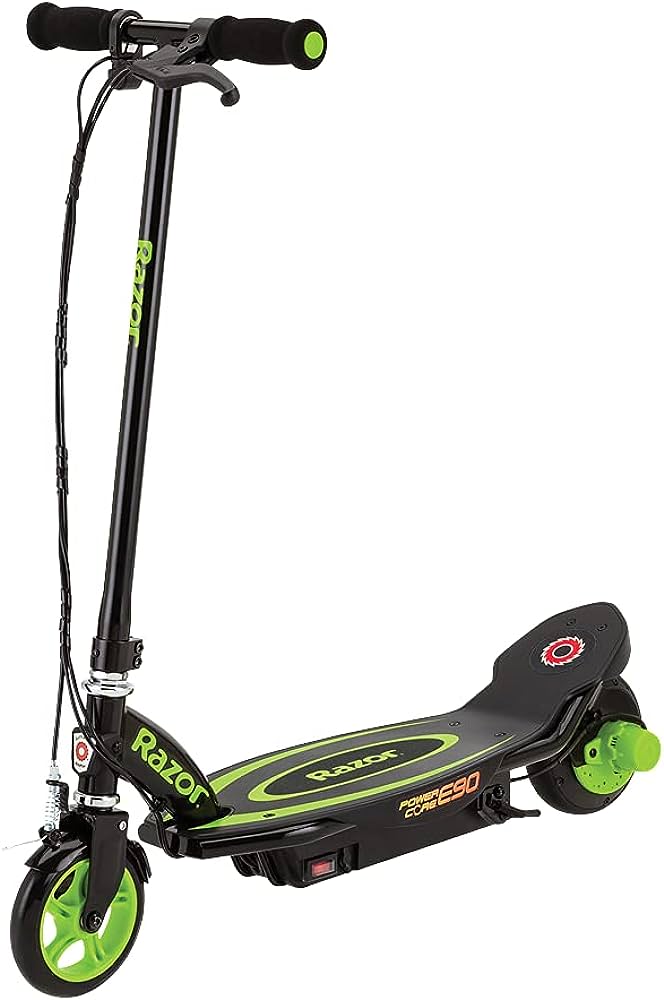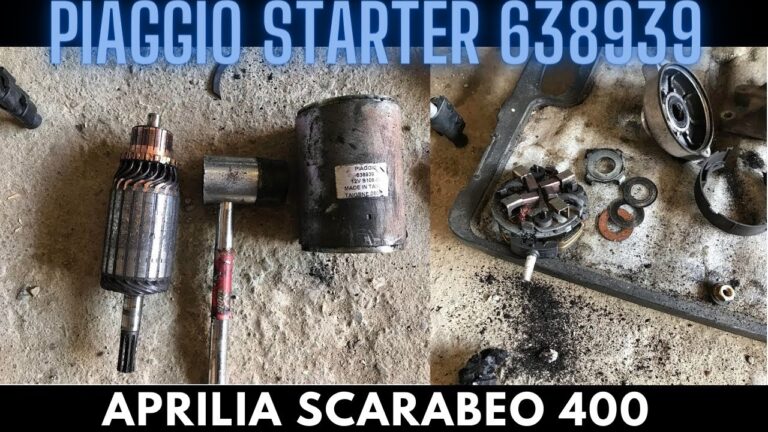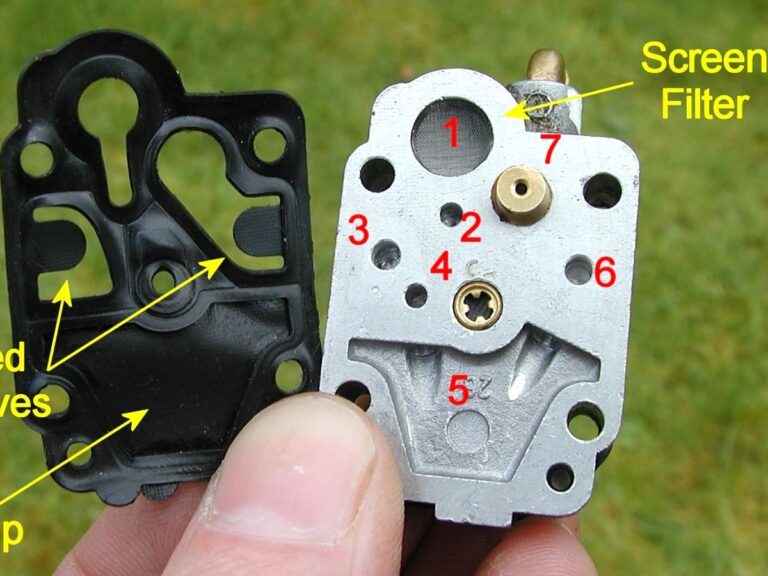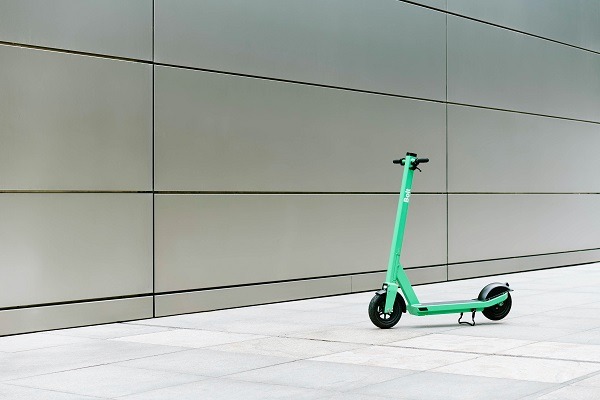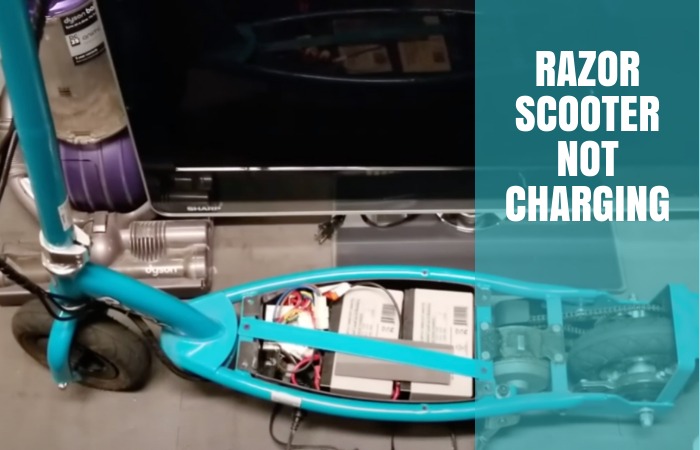Why Won’t My Scooter Start? Discover Quick Fixes and Troubleshooting Tips!
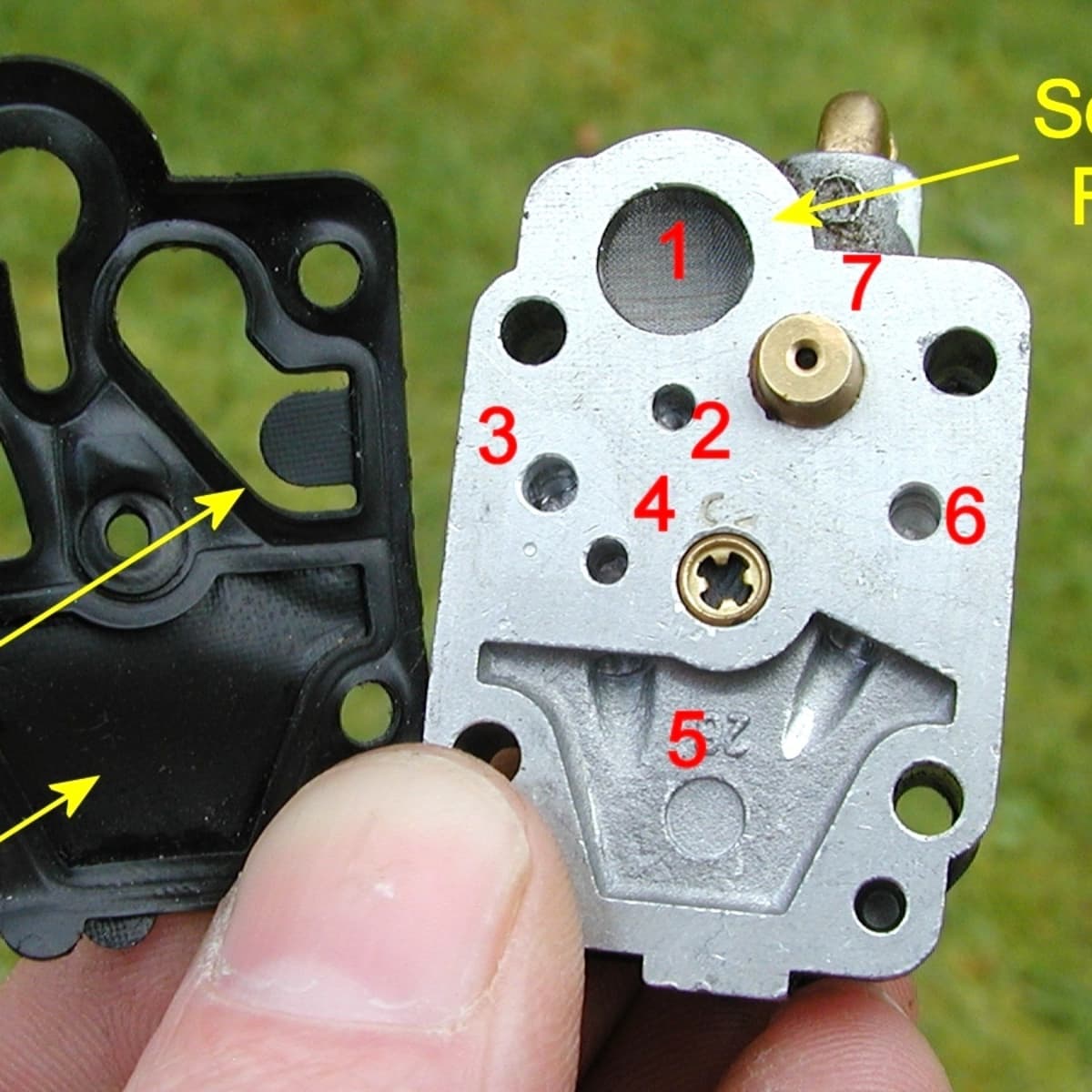
If your scooter won’t start, it could be due to a dead battery or a faulty ignition switch. Additionally, a clogged fuel line or a malfunctioning starter motor might be the cause.
Regular maintenance and proper storage can help prevent these issues from arising. It’s important to check the battery and ignition switch first and then inspect the fuel line and starter motor if necessary. By identifying and fixing the problem, you can get your scooter up and running again in no time.
Remember to consult a professional if you’re unsure or need assistance.
Checking The Battery
To troubleshoot why your scooter won’t start, start by checking the battery. Ensure it is properly connected and has enough charge, as a faulty battery can often be the culprit behind starting issues.
Battery Connection Issues
- Loose battery cables: One common reason why a scooter won’t start is due to loose battery cables. Check if the cables are properly connected to both the battery terminals and the scooter’s wiring. Ensure they are tightly secured to prevent any disruptions in power flow.
- Corroded terminals: Another possible cause is corroded battery terminals. Over time, corrosion can build up on the battery terminals, making it difficult for a proper connection to be established. Inspect the terminals for any signs of corrosion, such as a buildup of white or greenish residue. If corrosion is present, clean the terminals using a mixture of baking soda and water or a specialized battery terminal cleaner.
Battery Voltage Test
- Using a voltmeter to check battery voltage: A battery voltage test can help determine if the battery has enough power to start the scooter. To perform this test, you will need a digital voltmeter. Set the voltmeter to DC voltage and connect the positive (red) probe to the positive terminal of the battery and the negative (black) probe to the negative terminal.
- Determining if the battery is fully charged or needs replacement: A fully charged battery should read around 12.6 to 12.8 volts. If the voltage is significantly lower, it may indicate a weak or discharged battery that may need to be recharged or replaced. If the battery voltage is within the normal range but the scooter still won’t start, further troubleshooting may be required to identify other potential issues.
Remember, checking the battery connection and performing a battery voltage test are essential steps in diagnosing why your scooter won’t start. By addressing any loose connections or corroded terminals and ensuring the battery has sufficient voltage, you can increase the chances of getting your scooter up and running again.

Credit: www.amazon.com
Examining The Fuel System
Examining the fuel system is crucial when troubleshooting why your scooter won’t start. By checking the fuel line, filter, and carburetor for any clogs or issues, you can identify and fix the problem, ensuring a smooth start for your scooter.
Fuel Line Issues
Examining the fuel system is crucial when troubleshooting why your scooter won’t start. Fuel line issues can often be the culprit behind the problem. Here are some common fuel line problems to consider:
- Clogged or blocked fuel line: A blocked fuel line can prevent fuel from reaching the engine, leading to a scooter that won’t start. Common causes of blockages include debris, dirt, or rust buildup.
- Leaking fuel lines: Fuel leaks can occur due to loose connections, cracks, or damage to the fuel line itself. A leak can disrupt the fuel supply to the engine, causing starting issues.
Fuel Filter Problems
Another component of the fuel system that can cause starting troubles is the fuel filter. Here’s what you need to know:
- Dirty or clogged fuel filter: Over time, the fuel filter can become clogged with dirt, debris, or sediment. A dirty fuel filter can restrict the flow of fuel, leading to engine misfires, sputtering, or even complete engine failure.
- Replacing the fuel filter: If a clogged or dirty fuel filter is suspected, it should be replaced. Regularly changing the fuel filter is essential for maintaining proper fuel flow and preventing starting issues.
Gas Tank Troubles
Inadequate fuel levels or contaminated fuel can also contribute to a scooter’s failure to start. Consider the following:
- Insufficient fuel in the tank: Before panicking about a non-starting scooter, check if there is enough fuel in the tank. Low fuel levels can prevent proper fuel delivery to the engine, resulting in difficulty starting.
- Contaminated fuel in the tank: If you suspect contaminated fuel, it is important to address the issue promptly. Contaminants like water or sediment in the fuel can clog the fuel system and hinder engine performance.
By examining the fuel system, you can diagnose and address common issues that may prevent your scooter from starting. Whether it’s fuel line problems, a dirty fuel filter, or insufficient/contaminated fuel in the tank, being proactive in maintaining and troubleshooting the fuel system can help ensure smooth and hassle-free rides.
So, before resigning yourself to pushing your scooter, be sure to inspect the fuel system thoroughly.
Addressing The Ignition System
Having trouble starting your scooter? An often overlooked culprit is the ignition system. Discover why your scooter won’t start and how to address this common issue.
If you’re having trouble starting your scooter, the issue could lie with the ignition system. The ignition system is responsible for generating the spark that ignites the fuel-air mixture in the engine cylinder, allowing your scooter to start and run smoothly.
In this section, we’ll explore some common problems that can arise with the ignition system and discuss troubleshooting and repair options.
Spark Plug Inspection:
Checking the condition of your spark plugs is a good first step in diagnosing ignition system issues. Here are a few things to look out for:
- Fouled or worn-out spark plugs: Over time, spark plugs can become fouled with carbon deposits or worn out due to normal wear and tear. This can lead to a weak spark or no spark at all, making it difficult for your scooter to start.
Cleaning Or Replacing Spark Plugs:
To address fouled spark plugs, you can try cleaning them. Use a spark plug cleaner or a wire brush to remove any carbon deposits. However, if the spark plugs are excessively worn or damaged, it’s best to replace them altogether.
Be sure to consult your scooter’s manual for the correct spark plug specifications.
Ignition Coil Problems:
The ignition coil plays a crucial role in the ignition system, as it generates the high voltage needed to create a spark. Here’s what you should know about ignition coil problems:
- Faulty ignition coil: A faulty ignition coil can result in weak or inconsistent sparks, making it challenging for your scooter to start.
Testing And Replacing The Ignition Coil:
If you suspect that the ignition coil is causing your starting issues, you can perform a simple test using a multimeter to check for adequate voltage output. If the readings are outside the recommended range, it may be time to replace the ignition coil.
Consult a professional or refer to your scooter’s manual for specific instructions on how to replace the ignition coil.
Ignition Switch Malfunction:
The ignition switch is the component that controls the electrical connection between the battery and the ignition system. Here’s what you should be aware of regarding ignition switch malfunction:
- Issues with the ignition switch: A faulty ignition switch can prevent power from reaching the ignition system, resulting in no spark and preventing your scooter from starting.
Troubleshooting And Repairing The Ignition Switch:
To troubleshoot the ignition switch, you can start by checking for any loose connections or corroded terminals. If that doesn’t resolve the issue, it may be necessary to replace the ignition switch entirely. It’s recommended to consult a professional or refer to your scooter’s manual for proper guidance on troubleshooting and replacing the ignition switch.
By addressing common ignition system problems such as fouled spark plugs, faulty ignition coils, or ignition switch malfunctions, you can improve the chances of getting your scooter up and running smoothly again. Remember, if you’re unsure about any aspect of the troubleshooting or repair process, it’s always best to seek professional assistance.
Troubleshooting The Engine
Having trouble starting your scooter? Check out this troubleshooting guide for expert tips on what might be causing the engine issues and how to fix them. Get your scooter back on the road in no time!
Is your scooter refusing to start? Don’t worry, we’ve got you covered! We’ll walk you through some common engine issues and troubleshooting steps to get your scooter up and running again. Let’s dive in:
Blocked Air Filter
A blocked air filter can prevent the engine from starting or cause poor performance. Here’s what you need to know:
- Check if your air filter is dirty or clogged.
- Remove the air filter cover and inspect the filter for any debris or dirt buildup.
- If the filter is dirty, clean it using compressed air or gently wash it with mild soap and water.
- If cleaning doesn’t do the trick, consider replacing the air filter with a new one for optimal performance.
Engine Compression Test
Proper compression is vital for the engine to start and run smoothly. Follow these steps to check for any compression issues:
- Remove the spark plug and insert a compression tester into the spark plug hole.
- Turn the engine over a few times using the kickstarter or electric starter.
- Observe the compression reading on the tester gauge.
- If the compression reading is below the manufacturer’s specifications, it indicates a compression problem that may require professional attention.
Carburetor Adjustments
The carburetor plays a crucial role in fuel delivery and engine performance. Here’s how you can troubleshoot carburetor problems:
- Inspect the carburetor for any visible damage or blockage.
- Check if the fuel and air mixture screw is properly adjusted.
- Adjust the idle speed screw to ensure the engine idles smoothly.
- Clean the carburetor thoroughly, removing any dirt or debris that may be obstructing the fuel passages.
- Consider using a carburetor cleaning solution for stubborn deposits.
Remember, improper carburetor adjustments can lead to poor starting or running issues. It’s essential to follow the manufacturer’s guidelines when making adjustments or consider seeking professional help if needed.
By following these troubleshooting steps and performing regular maintenance, you can overcome common engine issues and enjoy a smooth-sailing scooter experience. Happy riding!
Additional Factors To Consider
Additional factors to consider when your scooter won’t start include checking the battery, inspecting the spark plug, verifying the fuel supply, examining the air filter, and assessing the ignition switch. These steps will help troubleshoot the issue and get your scooter back on the road.
When your scooter won’t start, there could be several additional factors at play. Understanding these factors can help you troubleshoot the issue and get your scooter back on the road. Here are some important factors to consider:
Old Or Stale Fuel
Using old or stale fuel can often prevent your scooter from starting. Here’s why and what you can do to address the problem:
- Fuel that has been sitting in your scooter’s tank for an extended period can lose its potency, making it difficult for the engine to ignite.
- Stale fuel can also lead to the accumulation of deposits and varnish in the fuel system, clogging the fuel filters and injectors.
To overcome this issue, follow these tips for dealing with old fuel:
- Dispose of old fuel properly by taking it to a local recycling center or hazardous waste facility. Pouring it down the drain or into the ground can harm the environment.
- To prevent fuel from going stale, consider using a fuel stabilizer when storing your scooter for an extended period.
- Regularly drain and replace the fuel in your scooter to ensure it stays fresh and prevents any starting issues.
Electrical System Check
Faulty electrical connections or components can also prevent your scooter from starting. Here’s what you should do to examine the electrical system:
- Check all electrical connections, including the battery terminals, wiring harness, and spark plug connections. Ensure they are clean, secure, and free from corrosion.
- Test the scooter’s electrical components, such as the ignition switch, starter motor, and solenoid. Verify that they are functioning properly by following the manufacturer’s guidelines or seeking professional assistance.
Professional Assistance
Sometimes, troubleshooting scooter starting issues might require the expertise of a professional. Here’s when it’s best to seek professional help:
- If you have tried diagnosing and fixing the problem yourself without success, it may be time to consult a reputable scooter mechanic or repair shop.
- A professional can accurately identify the cause of the starting issue and provide effective solutions, saving you time and effort.
Remember, finding a reputable scooter mechanic or repair shop is crucial to ensure proper diagnosis and repairs. Look for recommendations, read reviews, and choose someone with expertise in scooters for the best possible service.
By considering these additional factors and taking the necessary steps, you can increase your chances of getting your scooter back up and running smoothly.
Frequently Asked Questions Of Why Won’T My Scooter Start
What To Do When Scooter Is Not Starting?
Here are some steps to take if your scooter won’t start: 1. Check the fuel level and make sure there is enough gas. 2. Inspect the battery and ensure it has enough charge. 3. Examine the spark plug and clean or replace it if necessary.
4. Verify that the ignition switch and kill switch are both in the proper position.
Why Does My Scooter Not Want To Start?
Your scooter may not start due to various issues such as a dead battery, faulty spark plug, or fuel problems.
Why Does My Electric Scooter Have Power But Wont Start?
Your electric scooter may have power, but it won’t start due to possible issues with the ignition system or battery connection.
How Do You Start A 50Cc Scooter?
To start a 50cc scooter, turn the ignition key to the “on” position and kick start the engine.
Conclusion
Troubleshooting why your scooter won’t start can be a frustrating experience, but with the right knowledge and approach, you can get your scooter up and running again. Remember to check the basics first, such as fuel and spark plug, as these are often the culprits behind starting issues.
If these are not the problem, consider the electrical system, including the battery and wiring. It’s also important to inspect the carburetor and air filter for any blockages. And don’t forget to regularly maintain your scooter to prevent future starting problems.
By following these steps and being methodical in your approach, you can save time and money by diagnosing and fixing the issue yourself. So, roll up your sleeves, get your toolkit ready, and enjoy cruising on your scooter once again.
Happy riding!

